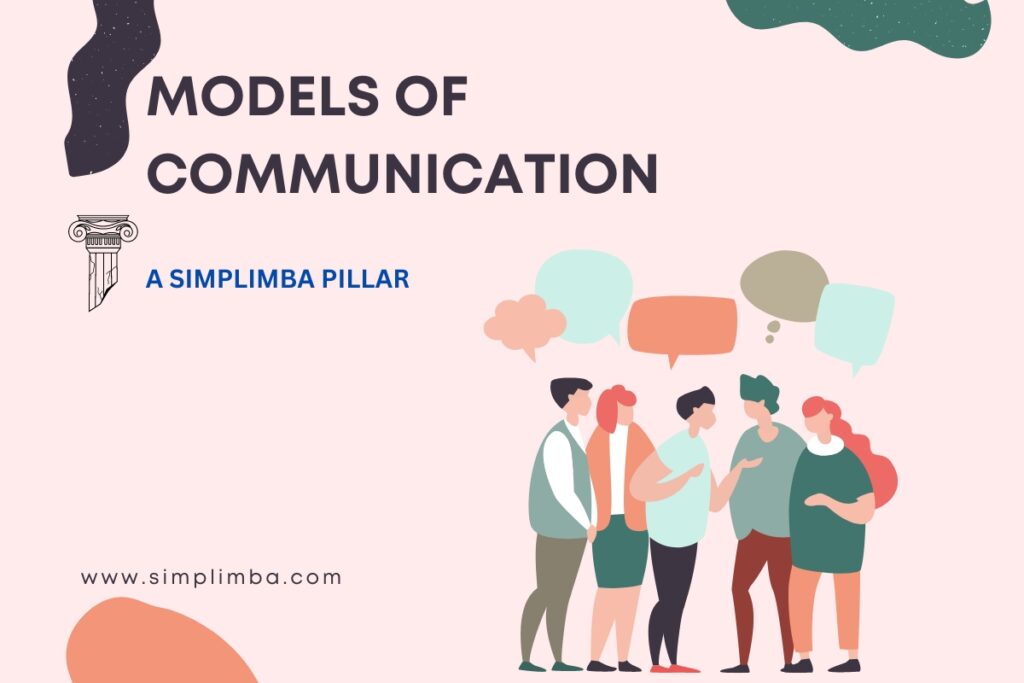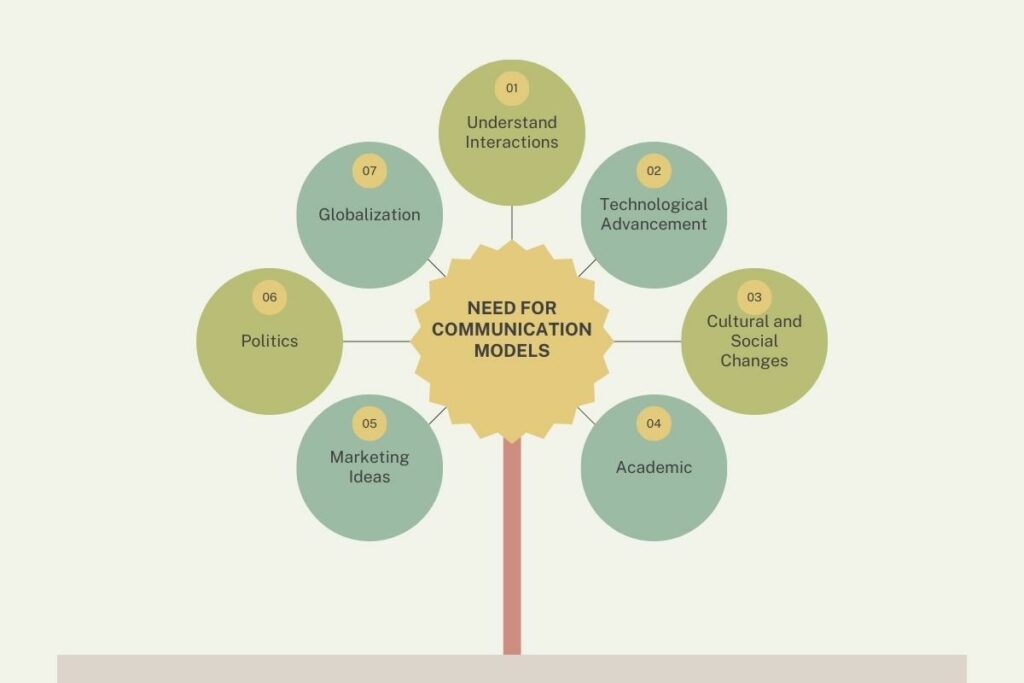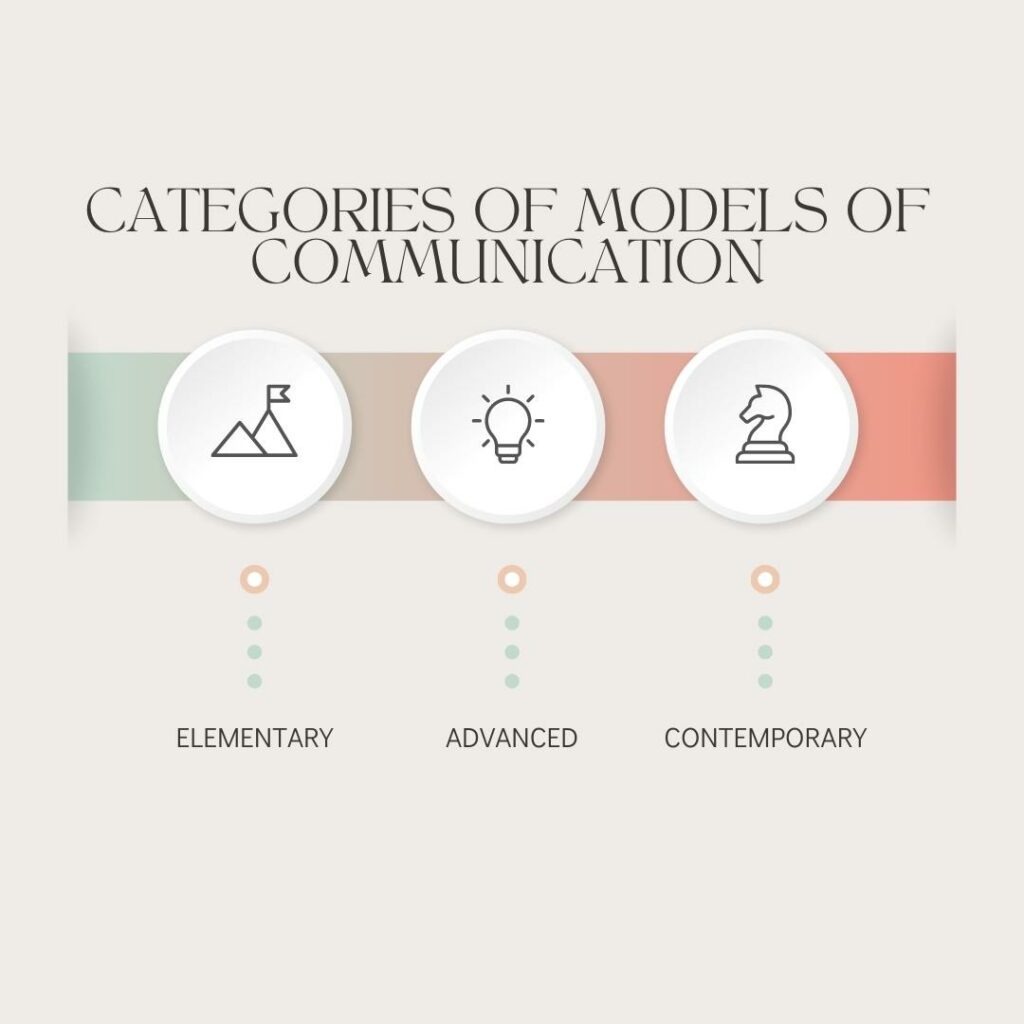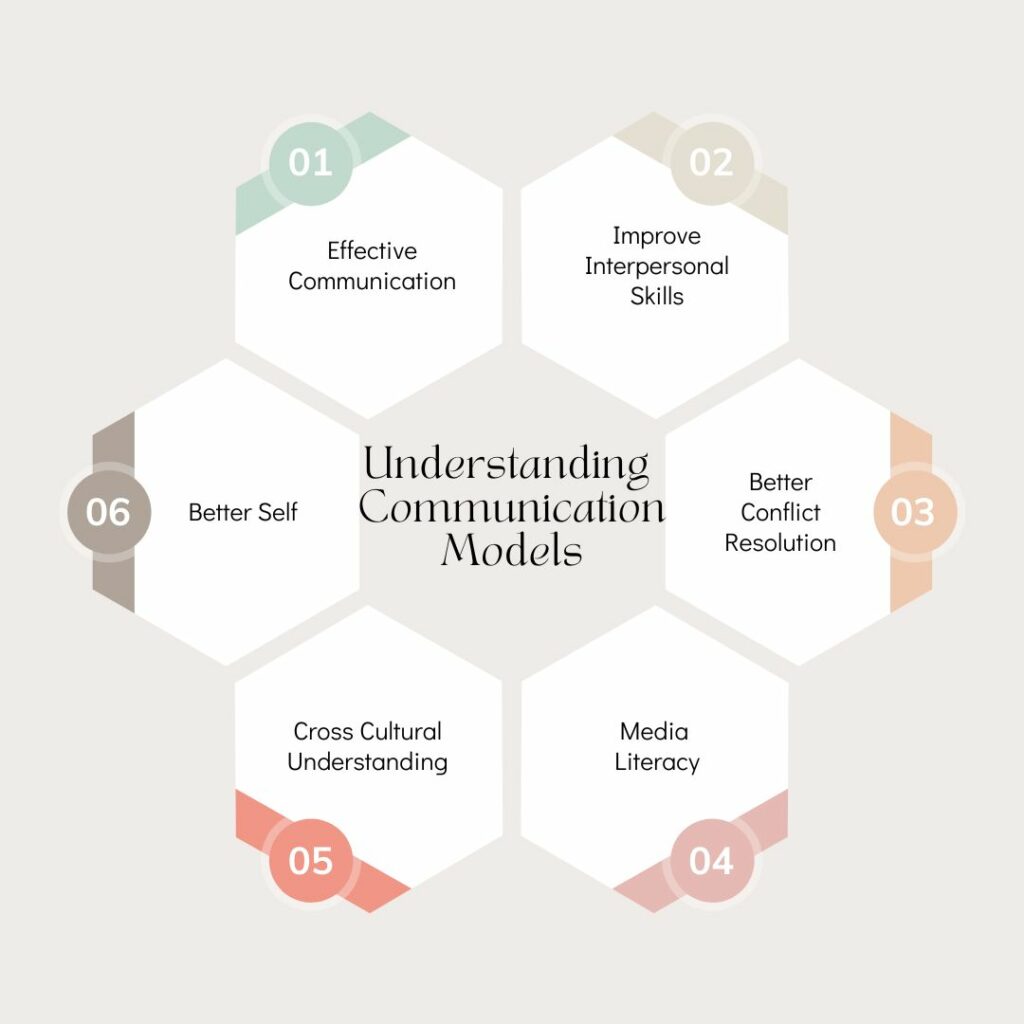Communication is an art as much as it is a science. For psychologists and scientists alike Models of communication have intrigued the space of research. At its heart, it is about the exchange of ideas, information, and emotions. However, over time, scholars and researchers have sought to decipher the underlying mechanisms of this complex process, leading to the evolution of a range of models of communication. Let’s delve into the labyrinth of these models, comprehend their usage, and understand the nuances of their development.

Why Do We Need Models of Communication?
Communication theories serve as structural frameworks that describe, explain, and predict how communication processes operate. They help us discern patterns, understand behaviors, and forecast outcomes. Moreover, these theories give us a lens through which we can appreciate the complexities of communication. They offer us a language and a narrative to articulate and explore our interactions.
What are the factors that led to the development of these Models of Communication?

The development of communication theories has been influenced by numerous factors:
The Desire to Understand Human Interaction: Communication is a fundamental part of our daily lives. As such, the desire to understand and predict the mechanisms of interaction has been a driving force behind the development of these theories.
Technological Advancements: As technology has evolved, so has our understanding of communication. The development of mass media, the internet, and digital communication platforms necessitated the creation of new theories to explain these new forms of interaction.
Cultural and Social Changes: Changes in societal and cultural norms over time have also played a significant role in the development of communication theories. As societies have become more complex and diverse, so too have the theories that seek to explain how we communicate within and across these contexts.
Academic Progress and Interdisciplinary Approach: The growth of academic fields like psychology, sociology, anthropology, and linguistics has enriched our understanding of communication, leading to the creation of more comprehensive and nuanced theories.
The Need for Effective Marketing and Public Relations: With the rise of consumer culture and global commerce, businesses needed better ways to persuade and communicate with their audiences. This need led to theories like the Elaboration Likelihood Model, which explains how persuasion works.
Political Influences: In the realm of politics, communication theories have been used to analyze propaganda, understand political campaigns, and explore the role of media in shaping public opinion.
The Impact of Globalization: Globalization, which increased the volume and variety of cross-cultural communication, also spurred the development of new theories. These theories strive to explain how cultural differences affect communication.
Categorization Models of Communication

Models of Communication can be categorized into three:
- Elementary Models
- Advanced Models
- Contemporary models
Elementary Models of Communication
A. Aristotle’s Communication Model
Widely accepted as one of the earliest models of communication, Aristotle’s Communication Model is simple yet profound. It underscores the speaker’s role, the speech or message, and the audience’s effect. Aristotle believed that the speaker’s credibility, the emotional state of the audience, and the argument’s logical appeal are critical to the communication process.
B. Berlo’s SMCR Model of Communication
Building on Aristotle’s model, David Berlo’s SMCR Model (Source, Message, Channel, Receiver) emphasizes the mutual interdependence of the communicator and the recipient. This model showcases the factors that can affect communication like communication skills, attitude, knowledge level, and cultural and social system.
C. De Fleur Model of Communication
Moving towards a more complex understanding, the De Fleur Model views communication as a circular process. It incorporates the idea of ‘decoding’ messages and acknowledges the impact of social realities on communication.
D. Duck’s Relationship Filtering Model
Duck’s Relationship Filtering Model provides a unique perspective on interpersonal communication. It explores how individuals filter out or reduce social information about others based on four filters: demographic, appearance, behavioral, and psychological.
E. Elaboration Likelihood Model
In the realm of persuasion, the Elaboration Likelihood Model postulates two routes to persuasion – a central path that focuses on argument quality and a peripheral path that relies on cues outside the argument’s content.
Advanced Communication Models
As society evolved, so did our understanding of communication. Theories began to consider group dynamics, power structures, and context.
A. Fisher’s Model – Small Group Communication
Fisher’s Model for small group communication presents communication as a four-phase process: orientation, conflict, emergence, and reinforcement.
B. GateKeeping Theory
The GateKeeping Theory takes into account the power of media. It explains how information is filtered for dissemination, be it through traditional media, peer-to-peer networks, or digital outlets.
C. Gerbner’s General Model
Gerbner’s General Model provides a comprehensive perspective, acknowledging multiple communicators, messages, and media. It illustrates that communication is an ongoing process, shaped by participants’ perceptions.
D. Helical Model of Communication
Frank Dance’s Helical Model depicts communication as a dynamic and evolutionary process, like a helix, which builds upon previous experiences and knowledge.
E. Knapp’s Relationship Model
Mark Knapp’s Relationship Model outlines stages of relational interaction, offering a roadmap for understanding how relationships blossom and deteriorate.
The Communication models of the contemporary era
Modern communication theories reflect our technologically advanced and interconnected society. These theories address communication dynamics in a digital age, interpersonal relationships, and societal structures.
A. Lasswell’s model
In the era of mass communication, Harold Lasswell’s model offers a straightforward framework: “Who says what in which channel to whom with what effect?”
B. Mental Model
The Mental Model emphasizes the cognitive aspects of communication. It suggests that we understand and predict the world by constructing small-scale, cognitive models of how things work.
C. Osgood- Schramm Model of Communication
In the Osgood- Schramm Model, communication is visualized as circular and continuous, stressing the reciprocal nature of communication where all parties encode and decode messages.
D. Poole’s Model – Small Group Communication
Marshall Scott Poole’s Model applies systems theory to small group communication, proposing that group decision-making involves multiple, concurrent sequences of behavior.
E. Propaganda Model
The Propaganda Model discusses the forces that shape the news presented in mass media, with a focus on the concentration of media ownership and its implications.
V. Convergence of Communication Theories
Recent theories, while distinct, often share similarities and overlap, enriching our understanding of communication.
A. Riley & Riley Model of Communication
The Riley & Riley Model is an adaptation of the Shannon and Weaver model, emphasizing the dynamism and complexity of communication, considering factors like experience, attitudes, and environment.
B. Shannon and Weaver Model of Communication
The Shannon and Weaver Model, a linear mathematical model, breaks down communication into key components: information source, transmitter, channel, receiver, and destination.
D. The Johari Window Model
The Johari Window Model provides insight into the process of self-disclosure in communication, highlighting the importance of trust and feedback in revealing ourselves to others.
E. The Newcomb’s Model
Newcomb’s Model emphasizes the importance of reference groups in communication, exploring the social dimensions of the communication process.
F. Westley and MacLean’s Model of Communication
Lastly, the Westley and MacLean Model elaborates on the GateKeeping Theory, integrating the role of feedback and demonstrating the interconnectedness of individual and mass communication.
Why is an understanding of models of communication important?

Understanding Models of Communication are crucial for several reasons:
Enhances Effective Communication: Communication models provide a structured framework for understanding the various components involved in the communication process. They help in identifying the sender, message, channel, receiver, and feedback mechanism, enabling effective and meaningful exchanges.
Improves Interpersonal Skills: The study of these models can improve interpersonal skills by helping us understand the various nuances of communication, such as non-verbal cues, the importance of active listening, and the impact of feedback.
Fosters Conflict Resolution: Many communication models, especially those focusing on interpersonal and group communication, can guide conflict resolution by highlighting the importance of clear messaging, empathy, and understanding others’ perspectives.
Strengthens Persuasion Skills: Models like the Elaboration Likelihood Model provide insight into how persuasion works, thus enabling more effective marketing, negotiation, and advocacy.
Promotes Media Literacy: In our media-saturated world, understanding models like the GateKeeping Theory or Propaganda Model can promote media literacy, equipping individuals to critically analyze and interpret media messages.
Facilitates Cross-Cultural Understanding: Several communication models take into account cultural context. Understanding these can facilitate cross-cultural communication, promoting tolerance and understanding in our diverse world.
Conclusion
The exploration of these theories paints a vivid tapestry of communication’s intricate nature. Models of Communication and theories offer a unique perspective, allowing us to view the kaleidoscope of communication through different lenses. From Aristotle’s simple yet profound model to the complex contemporaries, each theory has contributed immensely to our understanding of communication, providing a robust framework for future research and understanding.
Samrat is a Delhi-based MBA from the Indian Institute of Management. He is a Strategy, AI, and Marketing Enthusiast and passionately writes about core and emerging topics in Management studies. Reach out to his LinkedIn for a discussion or follow his Quora Page

